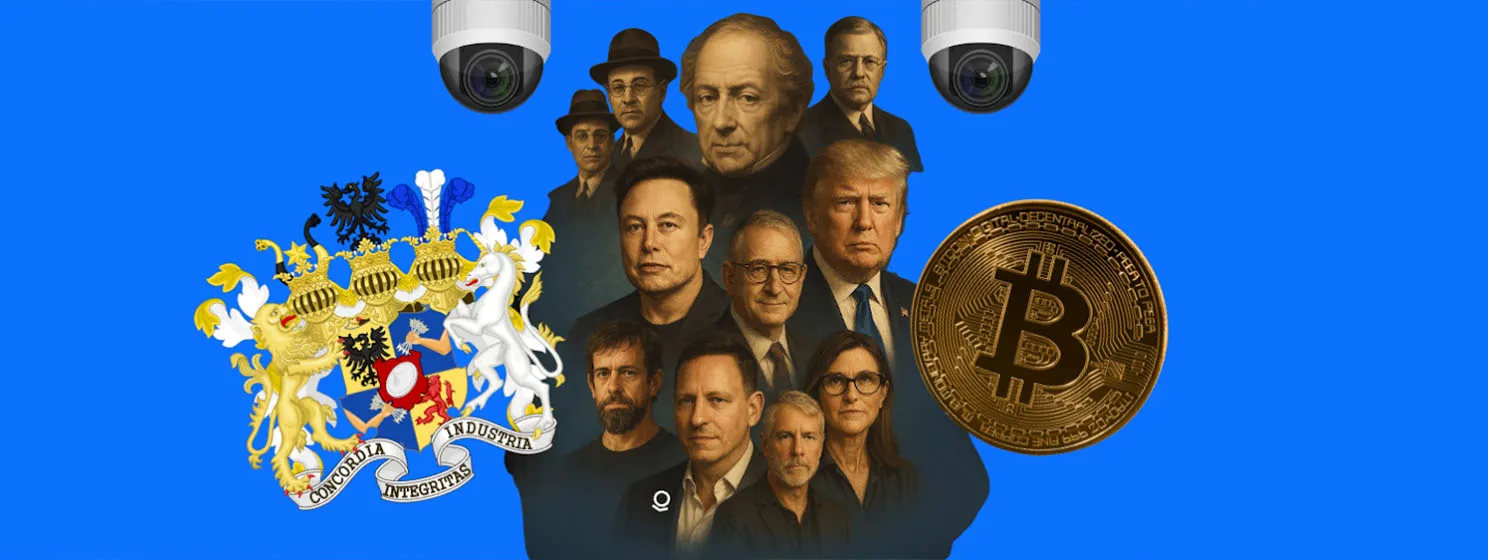|
Getting your Trinity Audio player ready...
|
This article was first published on Dr. Craig Wright’s blog, and we republished with permission from the author. Read Part 1, Part 2, Part 3, Part 4, Part 5, Part 6, Part 7, Part 8, Part 9, Part 10, Part 11, Part 12, Part 13, Part 14, and Part 15.
Many cypherpunk activists claim Bitcoin as their own (Golumbia, 2016). In their analysis, the authors take the crypto anarchy and concept of virtual communities promoted by Tim May and integrate it with the concept of digital money promoted by the same author (May, 1994). This analysis is then extended by authors such as Anderson (2022, p. 22), who argues that Bitcoin allows “cypherpunks to implement transparency for the powerful.” Yet, this analysis misrepresents the goal of Bitcoin, which differs from the cypherpunk ideal of seeking secrecy and not transparency. While May (1994) argues that one can “view issues of network visibility in terms of the “transparency” of nodes and links between nodes” and that “[t]ransparent means visible to outsiders, perhaps those in law enforcement or the intelligence community,” the concept is that the system should be to a cypherpunk “[o]paque mean[ing] not transparent, not visible.”
Tim May (1994), in founding the cypherpunk movement, claimed “no “laws.” No single nation controls the Net, no administrative body sets policy.” Yet, such a perspective is beyond foolish, with various regulations enforced in each jurisdiction. Hughes (2002, p. 363) demonstrated the fallacy of this position, noting that “the convergence of legal norms being produced or prompted by the Internet is remarkable and remarkably fast paced.” This author demonstrated that the integration of WIPO copyright treaties and the UNCITRAL provisions started to move towards the unification of electronic commerce regulations. Even though they are not aligned across all nations, they still managed to exist.
The position of May (1994) fails to account for discrepancies in regulation and law. While differences in legal interpretation across jurisdictions can make it difficult for consumers to understand their rights, the scenario fails to mitigate regulations and, unlike the path promoted by the cypherpunks, leads to more and not less regulation. Ahram et al. (2017) note that increasing regulation globally has occurred as cybercrime and fraud have increased, which has jointly inhibited the expansion of business opportunities and technology. Yet, such authors fall back to the position promoted by May (1994), arguing that blockchain technology alone will introduce technical solutions that will mitigate the need for political controls.
Unfortunately, the approach taken by May (1994) has undermined the concept of legal action and political mandates within software development circles. While many internet pundits and those associated with Silicon Valley continue to promote the idea of the internet being open and outside of regulation, as Timothy Wu demonstrated early on, the world of code does not replace the world of law (Wu, 2003). Unfortunately, this false dichotomy of believing that cyberspace is outside of the controls within the real world continues to lead to poorly argued decisions and a perspective that all regulation must be wrong.
Annotated Bibliography
Anderson, P. D. (2022). Cypherpunk Ethics: Radical Ethics for the Digital Age. Taylor & Francis.
This work explores the concept of a cypherpunk ethic. While the author seeks to introduce a moral worldview of the cypherpunks, the outcome demonstrates a naïve understanding of both law and ethics. Anderson (2022, p. 98) uncritically introduces the cypherpunk manifesto, noting how “code is free for all to use, worldwide.” While promoted as anarcho-capitalism representing the ideas of Milton Friedman outside of government control, the concept produces a strawman that is promoted through a “technological solution to the problem of government authority,” which “makes the communications and transactions of individuals entirely opaque to national security, law enforcement, and tax collection agencies” (Anderson, 2022, p. 62).
While Milton Friedman argued that the “deregulation of financial intermediaries is desirable on the grounds of market efficiency” (Friedman & Schwartz, 1986, p. 37), such an approach required government activity in policing the free market. The interpretation noted by Anderson in claiming the concept of anarcho-capitalism is antithetical to capitalist markets of the type first promoted by Adam Smith (1776) and even those noted by libertarian promoters, including Hayek and Mises (2012).
The work covers the topics of cypherpunk ethics, privacy, encryption, and transparency. Yet, the work misrepresents each of the concepts, arguing that privacy and anonymity are effectively the same and introducing a concept that power undermines all interactions and only radical equality can solve the problems of humanity. Here, an assumption is philosophically presented that “reason is equality of humans that sets Homo sapiens apart from other species” (Anderson, 2022, p. 39). Unfortunately, such an argument is not capitalist, as the author contends, but rather aligns with the principles of Marxism.
Hughes, J. (2002). The Internet and the Persistence of Law. Boston College Law Review, 44(2), 359–396. https://heinonline.org/HOL/Page?handle=hein.journals/bclr44&div=17&id=&page=&collection=journals
In an earlier paper examining the changes to international law that may occur because of the growth of the internet, Hughes (2002, p. 359) contended that “common legal norms being forged will affect national legal systems more deeply than traditional “international” or “transnational” law.” In this early analysis, the author noted that as with radio and early forms of media, “those in the vanguard bear both the pleasure of arriving first and the danger of becoming cannon fodder”. At this early stage, authors had already started to address how arguments over a no-law internet had evolved but that legal tools had developed quickly to extend existing laws and regimes into the territory of cyberspace.
While many problems arose, the United States and other, common-law jurisdictions quickly implemented legal frameworks to match analogous rules from the real world to cyberspace. As a result, the arguments around the internet being a global phenomenon fell away when analyzed against the location of participants in the physical world. Moreover, where necessary, treaty law such as that promoted by the World Intellectual Property Organization and the model frameworks promoted by the United Nations, including the United Nations Commission on International Trade (UNICITRAL), quickly mitigated any uncertainty.
The argument made that the internet is lawless fell away as “this invisible hand, or parallelism convergence” (2002, p. 363), led to the adoption of rules across countries and the fact that such nations managed to align regulations to ensure trade occurred smoothly. Moreover, such actions occurred relatively quickly. If anything, the approach was far quicker than that governments took against regulating systems based on blockchain technology today. Equally, though, the arguments presented by crypto-anarchists, including Tim May, may be seen to be spurious even now, and the approach demonstrated in arguing the decentralisation of Bitcoin and other digital cash systems should just be left to existing national regulations which need to be enforced.
Ahram, T., Sargolzaei, A., Sargolzaei, S., Daniels, J., & Amaba, B. (2017). Blockchain technology innovations. 2017 IEEE Technology & Engineering Management Conference (TEMSCON), 137–141. https://doi.org/10.1109/TEMSCON.2017.7998367
Ahram et al. (2017, p. 1) recognise that “Blockchain will mature in a number of areas as the body of research grows.” In this, concepts including cybersecurity and professional responsibility, that the authors note, will be determined through legal actions and the regulation of businesses. As the authors contend, software engineers may obtain professional licensing through bodies, including national societies and engineering degrees. As technologies associated with Bitcoin and blockchain technology develop, engineering groups will likely extend software analysis capabilities into such fields.
The authors extend the analysis into using blockchain technology in the health industry. This analysis integrates the health industry regulation within the United States (HIPAA). By implementing blockchain technology, it is noted that the efficiency of many health industry systems can be improved and that primary care physicians and referral workers may understand and share information with lower rates of error and loss. The authors promote the idea as a healthchain concept integrating external web pages and other information.
As Ahram et al. (2017, p. 5) note, “information technology has become a critical innovation in almost every industry.” Therefore, the likelihood is that as blockchain technology develops and matures, such technologies will also become part of daily life. As such, the development of engineering standards is essential, but it is not a process developed through anarchy and requires the management of systems and audits to be achieved.
References
Ahram, T., Sargolzaei, A., Sargolzaei, S., Daniels, J., & Amaba, B. (2017). Blockchain technology innovations. 2017 IEEE Technology & Engineering Management Conference (TEMSCON), 137–141. https://doi.org/10.1109/TEMSCON.2017.7998367
Anderson, P. D. (2022). Cypherpunk Ethics: Radical Ethics for the Digital Age. Taylor & Francis.
Friedman, M., & Schwartz, A. J. (1986). Has government any role in money? Journal of Monetary Economics, 17(1), 37–62. https://doi.org/10.1016/0304-3932(86)90005-X
Golumbia, D. (2016). The Politics of Bitcoin: Software as Right-Wing Extremism. U of Minnesota Press.
Hughes, J. (2002). The Internet and the Persistence of Law. Boston College Law Review, 44(2), 359–396.
May, T. C. (1994). Crypto anarchy and virtual communities. Timothy C. May. http://groups.csail.mit.edu/mac/classes/6.805/articles/crypto/cypherpunks/may-virtual-comm.html
Mises, L. von. (2012). Liberalism. Liberty Fund. https://muse.jhu.edu/book/18236
Smith, A. (1776). An Inquiry into the Nature and Causes of the Wealth of Nations. In Two Volumes. (1st ed.). W. Strahan and T. Cadell.
Wu, T. (2003). When Code Isn’t Law. Virginia Law Review, 89(4), 679–752.
Watch: The Bitcoin Masterclasses: How to use IPv6 and Bitcoin

 07-15-2025
07-15-2025 





